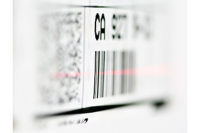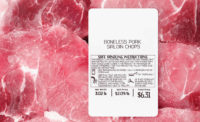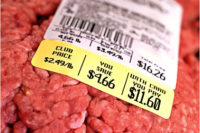Processors embrace automation in weighing & labeling
Weigh, price labelers expand functions

Weigh, price, labelers continue to shift from semiautomatic to automatic machines as sales of case-ready products and deli products grow and processors address personnel shortages.
Automating the weigh, price, labeling process offers many benefits beyond reducing labor requirements. Automated equipment reduces product giveaway, increases efficiency, applies labels more precisely and consistently, cuts downtime, accelerates changeover, enhances hygienics due to less operator handling of the product, and digitizes the process so information for traceability and process analysis can be captured.
Case-ready products are a driving force in the automation of weigh, price, label systems. The case-ready market is so strong that Tyson Foods has built a plant in Eagle Mountain City, Utah, which opened in 2021. In addition, Tyson plans to invest $55 million to reopen a plant in Columbia, S.C., and revamp it to produce retail-ready, portioned packages of fresh beef and pork, as well as ground beef, for grocery and club stores in the eastern U.S.
“…this new [South Carolina] facility will help us meet growing demand from our retail customers with high-quality, pre-cut, pre-packaged fresh beef and pork,” says Nate Hodne, senior vice president and general manager of the Portioned Protein Innovations team for Tyson Fresh Meats, the beef, and pork subsidiary of Tyson Foods. The plant is expected to employ 330 people. Tyson also operates case-ready beef and pork packaging lines in plants in Iowa, Tennessee, and Texas.
Increasingly flexible weigh, price, label machines are designed to handle different size products with minimal adjustment. Label sizes can vary too. Label widths generally measure about 5 or 7 inches with a print area of roughly 4 or 6.5 inches, respectively. Label lengths can vary considerably from less than 1 inch to more than a foot.
Systems may operate as standalone units or integrate with line-, plant- and enterprise-level systems so orders can be shipped the same day they are received. This networkability also can help generate a serialized record to enable product traceability throughout the supply chain.
The fastest weigh, price, label systems handle more than 150 packs per minute, and some machines can accommodate linerless labelstock to eliminate liner waste and score points for sustainability. National Type Evaluation Program (NTEP)-approved machines simplify label design. The NTEP certification, issued by the National Conference on Weights and Measures, confirms the device(s) meet the requirements of Specifications, Tolerances, and Other Technical Requirements for Weighing and Measuring Devices, NIST Handbook 44.
Weight, price, label systems typically offer a small footprint to fit in tight spaces, a choice of scale capacities, and operating modes (catch weight, fixed weight, average weight, or multi-rank weighing). The equipment may accommodate multiple labeling heads and thermal or thermal-transfer printers. Processors often may choose good, better, or best print resolution. Labels typically are applied to the top and bottom of each package. Potential label application processes include air-jet, piston, rotary, or belt. Print speeds can reach up to 16 inches per second (ips) but more typically fall in the range of 8 to 11 ips. Vision systems and sensors may be integrated to confirm label presence, position, and print quality, scan and verify readability of barcodes, provide optical character recognition, and capture code data.
Other common weigh, print, label equipment attributes include modular design; stainless steel construction; onboard label design software; large, intuitive touchscreen operator interface; quick belt changeover; and automatic printer repositioning.
Options depend on the machine builder but commonly consist of features such as remote diagnostics, integrated metal detection, radio frequency identification tagging, ability to withstand washdown conditions, plug-and-play components to expedite maintenance, and reject mechanisms to ensure no faulty product ships.
Looking for a reprint of this article?
From high-res PDFs to custom plaques, order your copy today!






